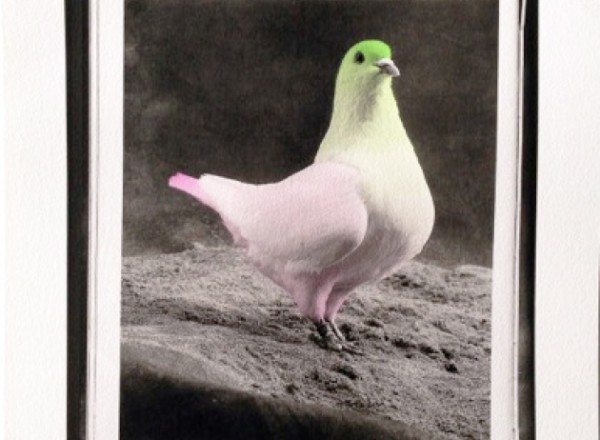


Etienne Chambaud
Etienne Chambaud was born in 1980 in Mulhouse. He lives and works in Paris.
He is a graduate of ECAL (École cantonale d’art de Lausanne) in Lausanne, Switzerland (2003), the Villa Arson, Nice (2005) and the post-graduate program at ENBA (École nationale des beaux-arts de Lyon), 2004/2005. He is represented by the following galleries: Sies+Höke (Düsseldorf), Labor (Mexico) and the Bugada & Cargnel galleries (Paris).
Statement
Through his oeuvre, artist-investigator Etienne Chambaud develops a practical reflection on the process of creation. Each work seems to emanate from a plurality of sources and ideas, some of which are occasionally and/or deliberately rendered incomprehensible. Le Comble (2007) was an example of this – the artist covered the preparatory notes for the exhibition in black spray paint. With Etienne Chambaud’s work, multiple interpretations are possible although the titles and captions of the pieces act as invaluable guides in the understanding of his oeuvre. Inspired by his experiences as a reader, Etienne Chambaud is a staunch defender of intertextuality, transposing the association of ideas to his montages of images and forms. His reflection on the collage contains the recurrent use of cutting or ‘the cut’ as a motif (Blade Portraits, 2012), transcribes the relationship between movement and immobility (La Danse, 2009-2011) and provides a complex enquiry into the history of the guillotine and its relationship to the history of the museum (Contre-Histoire de la Séparation, 2010, in collaboration with Vincent Normand).
The Naked Parrot, 2012
Colour enhanced photograph
Watercolour, food colouring, pigment print on paper, 41 x 32 cm / One-off pieces
Acquisition in 2013
The Naked Parrot photographs come from the series of the same name. Etienne Chambaud uses a black and white photographic print depicting a book opened on a page with a picture of a white dove. Each photograph is rendered unique through the different colour(s) given to the animal subject, by pigment printing and the addition of paint and food colouring. From one work to the next, the bird’s feathers range from the understated to the outrageous, bestowing it with expressiveness and originality. The different results remind us of a parrot or other exotic species. Here, the artist is interested in the complex relationships of hybridization that exist between animals and humans. He gives each bird a new look, as if to symbolically extract it from the procedures of construction and production from which it initially came, by means of breeding and the techniques of domestication. Therefore, the dove can be said to become “a naked parrot”, or a “modern chimera, a being fully constructed from the outside”. In a way, the bird is in search of its lost roots, of an unattainable truth. This photographic series was the central piece of the eponymous exhibition by the artist at the Labor gallery (Mexico, April-June 2013), which moreover included an in situ work making use of real pigeons. Fed with different coloured seeds (reminding us of the food colouring previously mentioned), these birds invested the exhibition space before its public opening, leaving coloured bird droppings or excrement on the ground (Additive Expression, 2013). This use of colour, highlighting a motif as if to better define its profound nature, also reminds us of another series of images by the artist, representing film colourization studios from the beginning of the 20th century where the faces and hands of the workers are stained with acrylic paint (Les Coloristes Coloriées, 2009).